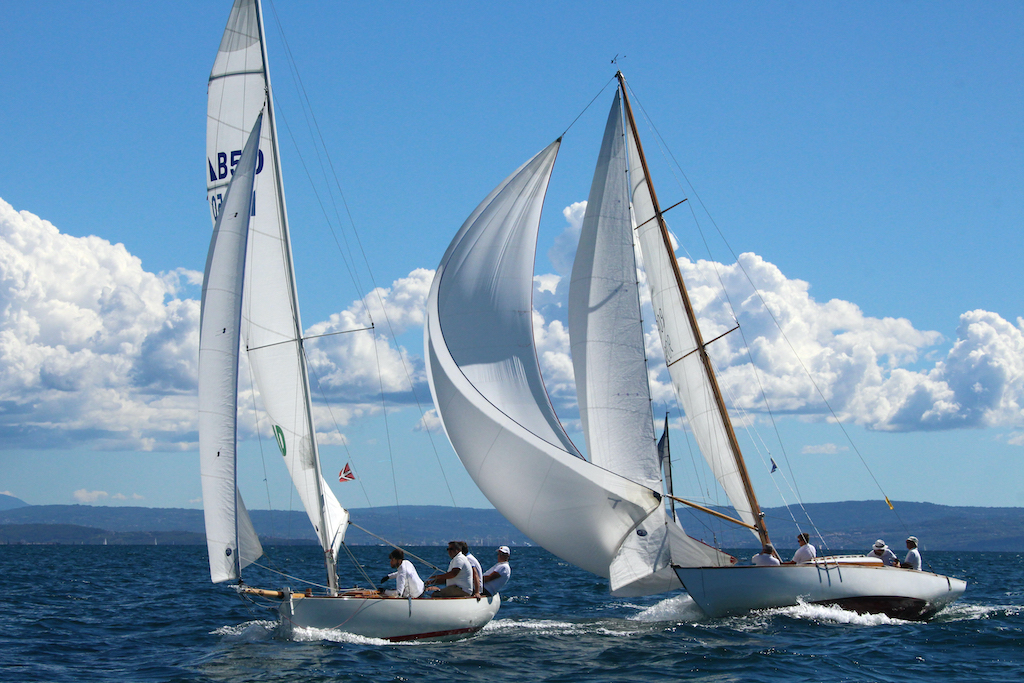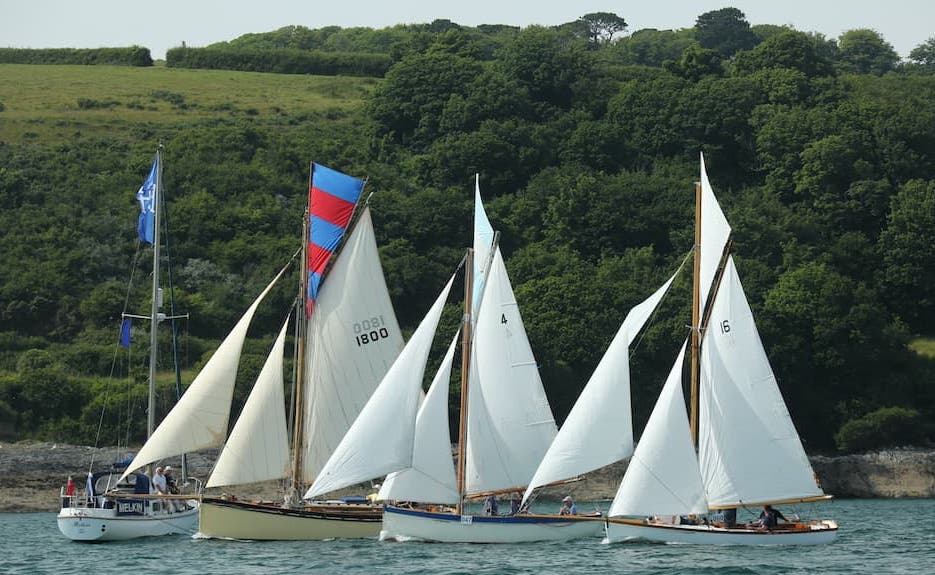“I owned Felice in the late 1960s. I bought her as an uncompleted project, just an open hull – clinker mahogany on oak, copper fastened. The long iron ballast keel had been lost – somewhere in the Solent near Hillhead, I think. I gathered that the previous owner had knocked out the keelbolts to lighten her when bringing her ashore, and the keel, abandoned in the mud, had eventually sunk from view.
I discovered that Felice was one of the Delight class, around 20ft LOA and built in Yarmouth, Isle of Wight, by Stanley and Colin Smith on the lines of their Nova Espero, which they sailed transatlantic twice in the 1950s. (They wrote a book called The Smiths a Sea – republished 2006 – and another, The Wind Calls the Tune, about their second trip, from Dartmouth to New York). Nova Espero later made a Mediterranean voyage in the hands of Charles Violet, who also wrote a very nice book about it (Nova Espero’s Third Voyage). They are very distinctive little boats, with a spoon bow, a flat, smooth run and a gently sloped transom. The rudder is inboard, mounted on a long fin keel. Built-up topsides make it quite roomy for a boat of that period.
I went to Yarmouth to see the Smiths, hoping to get a drawing of the keel so I could cast a new one. In those days their yard was a marvellous place – a proper old-fashioned wooden boat yard. They looked pretty baffled when I asked for keel drawings, but they helped me to guesstimate the dimensions and hence the weight. From memory, the keel was about four inches thick, eight feet long and a maximum of about eighteen inches deep. A similar boat of a slightly larger sort was in build at the time, and in the harbour was a trot of Delights, maybe six of them, as well as one or two of the larger class, whose name I can’t recall. At one time the Delights were a familiar sight in the Solent; I think I saw one a couple of weeks ago, though it was a long way away and I may have been mistaken.
It took me about three years of evenings and weekends to rebuild Felice’s decks and cockpit, working in a barn very kindly lent to me by a friend in Flax Bourton, Somerset. I also rebuilt the mast, which was 3/4 rigged with wooden jumper struts.
The most daunting task was the casting of the keel and the drilling of the holes for the keelbolts. I made a plywood pattern and considered casting in the keelbolt holes, but the foundry reckoned it nearly impossible to calculate their position sufficiently exact to match the existing holes in the floors and deadwood. (As the keel cools it shrinks, of course, and hence the holes move, maybe up to an inch.) I therefore drilled the holes myself with a hired electric drill and a wooden jig which kept the drill upright. Bricks stacked on a lever provided the pressure, and I made a long 1 inch drill by welding an extension on to an ordinary bit. The drilling took many hours, and I had to stop every few minutes to remove the cast iron swarf from the hole with a vacuum cleaner attached to a bit of hosepipe… Then I had to counter-bore the holes for the boltheads using a cutter I made from silver steel. Somehow I doubt whether people would do things in that fashion these days… This was followed by the precarious business of jacking up the boat (I only had one car jack) and placing the keel below her. Fortunately the bolt-holes lined up…
Eventually Felice was reassembled and put afloat on a mooring in Portsmouth Harbour. And then, as is so often the way of things, I was overwhelmed with work, got married and bought a house…. Poor Felice lay neglected on her mooring for a good while and I eventually sold her – I cannot recall the name of the buyer. So much work, and so little sailing… But that is the fate of many such projects.”
Information courtesy of Martin Corrick








